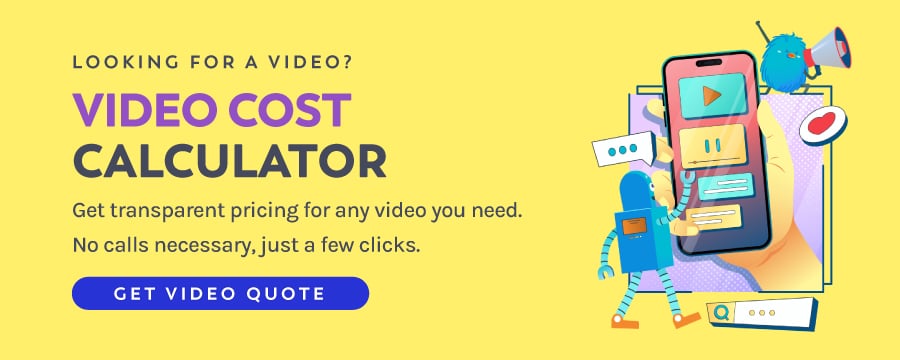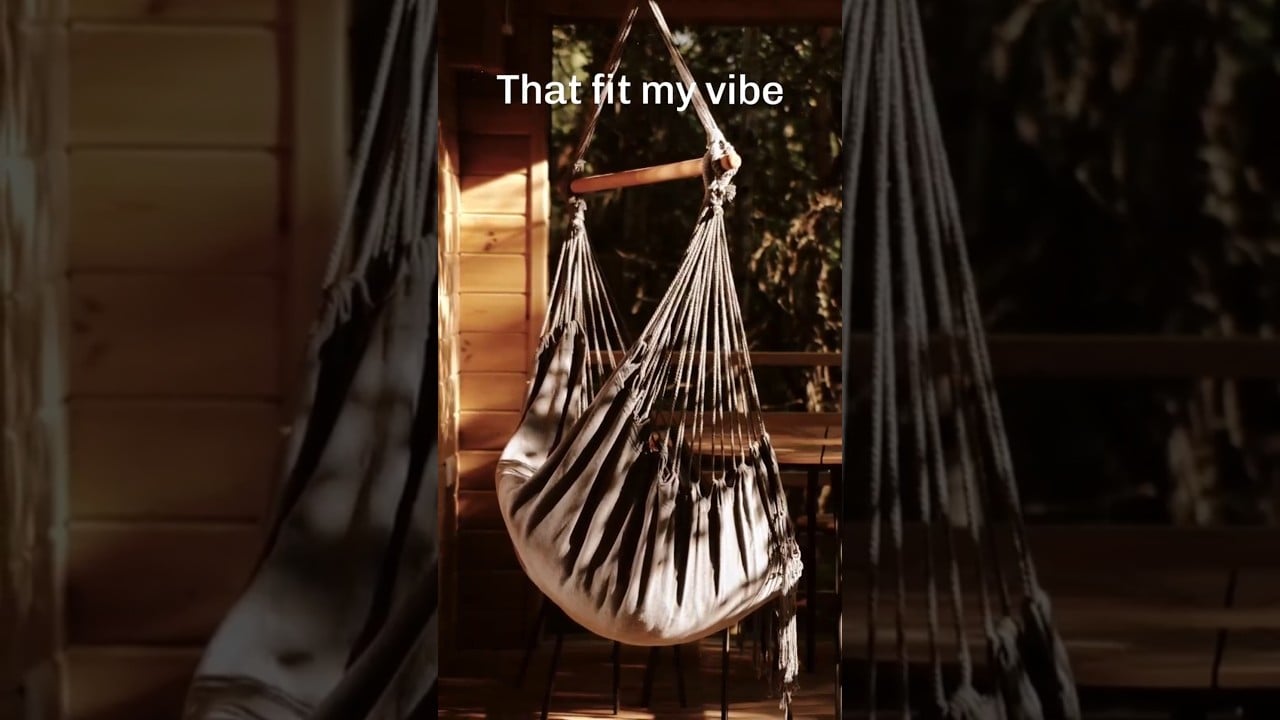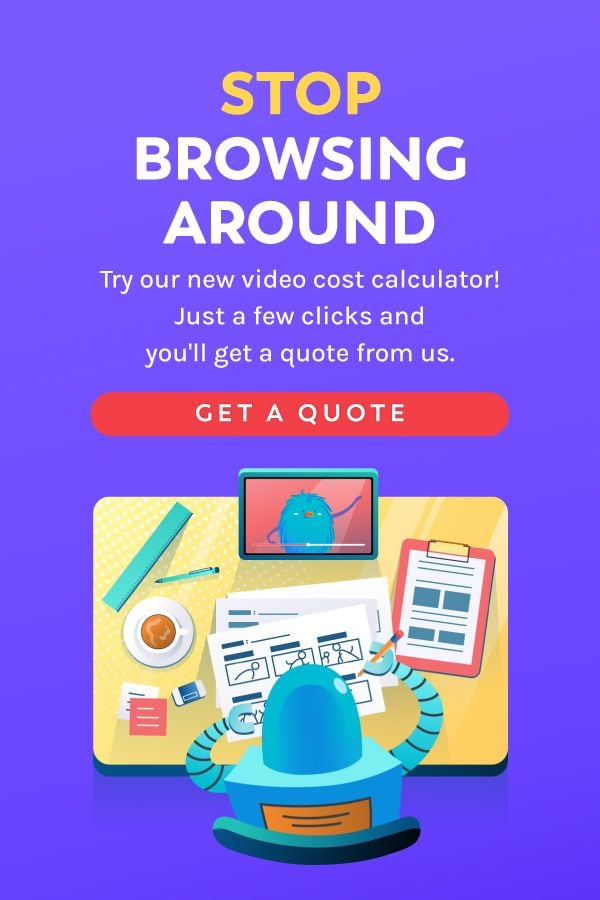We’re living in a mobile-first world, where people are glued to their screens.
They scroll fast, swipe even faster, and make split-second choices about what to watch (or skip).
That’s why vertical video has become a part of modern marketing for businesses of all sizes across industries.
I’ll share with you why vertical video works, where it performs best, and how to actually make it hit.
Also, get an infographic at the end of this article, perfect for saving or sharing with your team as a quick reference on vertical video for marketing!
Why Is It Time for Vertical Videos?
All video platforms, from TikTok to YouTube, have one thing in common. Can you guess?
That is the fact that they are now built for vertical videos.
I see this unified alignment as a direct response to how people use their phones.
More than that, there are big reasons why vertical videos are in the first place for marketing.
It’s a Shift in Audience Behavior
Our day-to-day activities online, such as checking emails, posting updates, and watching videos, are gradually changing from desktops to smartphones.
In fact, Cisco predicted that globally, mobile data traffic would increase sevenfold between 2016 and 2021.
Research in 2020 also proves that mobile internet usage is higher than desktop.
That’s a solid reason why TikTok marketing has a huge impact in the upcoming years.
They are More Engaging
Research has shown that people are more likely to watch loops after loops of vertical videos than horizontal ones.
This makes sense when you think about how we use our phones.
We hold them vertically more often than not, so it’s more natural for us to watch videos in that orientation.
They Take Up More Screen Space
When you watch a horizontal video on your phone, it often appears with black bars above and below, or shrinks down if you don’t flip your phone. That’s wasted space.
Vertical videos, however, are made to fill the entire screen. No empty margins, no distractions.
It offers full-screen content that looks clearer and pulls the viewer in.
As a result, it creates a more focused and immersive experience, which is exactly what you want when trying to capture attention on a crowded feed.
They are More Shareable
People are more likely to share what’s easy to watch. Vertical videos are mobile-first and effortless to view, which makes them perfect for quick shares on Stories, DMs, or group chats.
And when your content gets shared, that’s organic reach you didn’t have to pay for!
They are Easier to Produce
You don’t need a studio setup or fancy gear to get started. I’ve created vertical video content using nothing but a phone, and so have many successful brands.
It’s a low-barrier, high-impact format that’s accessible to businesses of all sizes.
Where Should You Publish Vertical Videos?
Creating great content is only half the battle. To truly make an impact, you need to know where to share it.
I’ve listed great social platforms to post and share your vertical videos to drive high engagement and results.
YouTube
As of 2024, YouTube Shorts are generating over 70 billion views per day globally.
Rewarded as the biggest video platform out there, YouTube needs to align its content preferences.
It’s no longer just for long-form video since July 2021.
With the introduction of YouTube Shorts, the platform has promoted vertical, short-form content, and it’s gaining serious traction.
YouTube’s algorithm now actively promotes Shorts alongside long-form content, giving creators new ways to build visibility.
I’ve found that Shorts are a great way to repurpose snippets of longer content or to quickly test hooks and ideas with new audiences.
Additionally, since YouTube remains the second-largest search engine, vertical videos here achieve long-term discoverability, not just fleeting attention.
Instagram (Reels & Stories)
Instagram has fully leaned into vertical video through both Reels and Stories.
Stories are great for quick updates and behind-the-scenes content, while Reels excels at gaining organic reach.
Reels now account for over 50% of the time users spend on Instagram, which is reported as the platform’s fastest-growing content format.
In many cases, Reels have outperformed static posts and carousels in both reach and engagement.
And because Reels are shown beyond your followers (via the Explore tab), they help you reach people who don’t already know your brand.
TikTok
TikTok is where the vertical video boom began, and since then, it has become the trendsetter.
The app has over 1.5 billion active users, with an average session time of 11 minutes, far higher than most social platforms.
I’ve seen brands grow massive followings from scratch here using nothing more than a phone and a good content idea.
It’s built for fast, authentic storytelling, and rewards creativity over production quality.
Another rule of thumb for winning on TikTok is consistency, so keep posting consistently to reach bigger audiences.
TikTok’s algorithm favors content that gets strong watch-through rates, which vertical video supports naturally by filling the screen.
Snapchat
While Snapchat may not dominate headlines like TikTok or Instagram, don’t underestimate it.
It remains a strong vertical video platform, especially for younger demographics, with daily use by over 60% of U.S. Gen Z users.
With a strong demographic of younger users, Snapchat works well for brands targeting teens and young adults.
Not to forget, Snap Ads and Spotlight (Snapchat’s TikTok-like feature) are fully vertical, and the platform boasts high swipe-up rates compared to other ad platforms.
It’s best for sharing behind-the-scenes content, exclusive offers, or time-sensitive promotions.
Facebook may feel like a legacy platform, I understand, but it’s still relevant.
Similar to Instagram, Facebook has aggressively adopted vertical video through Facebook Reels and Stories.
Reels are now the most engaging content format on Facebook, according to Meta’s 2023 report.
Facebook has been prioritizing Reels in both organic and paid placements, especially for mobile users.
What I like about Facebook is how easy it is to cross-post vertical video content from Instagram.
You can save time while maximizing reach across both platforms.
It’s especially useful for targeting older demographics that may not be as active on TikTok or Snapchat.
What Kind of Content is Best for Vertical Videos?
Not all content thrives in the vertical format. So what types of vertical content actually work best for marketing?
In-App Advertising
Vertical video is tailor-made for in-app experiences, especially on mobile-first platforms like Instagram, TikTok, Snapchat, and Facebook Stories.
It fills the entire screen, demands attention, and eliminates distractions.
The best practices you can use are to use hooks in the first 3 seconds, use bold captions, and keep it short and punchy (15–30 seconds works great).
Here’s an example from our production:
Product Explainers
If you’re demoing an app or showing how a product works, vertical is ideal—especially when your audience is watching on a mobile device.
For instance, you can zoom into features, show thumb-driven gestures, and replicate the user experience as it naturally happens on smartphones.
Here are my tips: use screen recordings, tap indicators, and overlays to guide attention.
Digital Billboards
Vertical videos are applicable outside cyberspace and social media.
Modern digital signage, for example, often comes in portrait screens (think mall kiosks, elevator screens, or bus shelters).
Vertical videos match the physical dimensions of these displays, optimizing visibility and legibility in public spaces.
Consider using large fonts, high-contrast visuals, and motion graphics to grab attention even from afar.
Mobile-Live Videos
While vertical videos continue gaining traction, perhaps this is your sign to incorporate live video sessions into your marketing strategy.
Vertical is the natural choice, as there are features like Instagram Live, TikTok Live, or Facebook Live.
Vertical videos are native to mobile, where viewers can engage instantly without needing to rotate their phones.
You can do many things with live videos, such as Q&A sessions, quick updates, live product reveals, or real-time interaction with your community.
In case you need a pro tip, keep your framing tight, with your face or subject centered to avoid awkward dead space.
Behind-the-Scene Sneak Peeks
Behind-the-scenes content is raw, spontaneous, and often filmed on mobile, making vertical the most authentic fit.
It feels personal and unpolished in the best way, which is highly ideal for TikTok and stories.
You can show the team in action, work-in-progress shots, or fun moments on set.
The fact is, viewers love to see the real side of your brand, which can build connection and trust.
Vertical Videos for Marketing: The Infographic
Here at Breadnbeyond, we see the marketing and creative video creation industry as overlapping industries.
Naturally, we looked into this vertical video syndrome phenomenon.
We put together an infographic containing several sections of everything you need to know about vertical videos as marketing tools.
In this infographic, you can find everything you need to know about vertical videos as marketing tools. Check it out!
<div style="clear:both"><a href="https://breadnbeyond.com/articles/vertical-videos-marketing/" target="_blank" rel="noopener"><img src="https://breadnbeyond.com/wp-content/uploads/2013/04/Vertical-Videos-Infographic.jpg" class="img-embed" title="The Ultimate Guide to Vertical Videos for Marketing [INFOGRAPHIC]" alt="The Ultimate Guide to Vertical Videos for Marketing [INFOGRAPHIC]" width="800" height="11447" border="0"/></a></div><div>Courtesy of: <a href="https://breadnbeyond.com" target="_blank" rel="noopener">Breadnbeyond</a></div>
Boost your sales today with explainer videos, check out our packages, or get transparent video pricing with our video calculator below:

![The Ultimate Guide to Vertical Videos for Marketing [INFOGRAPHIC]](https://breadnbeyond.com/wp-content/uploads/2018/09/Vertical-Videos-1024x536.jpg)


